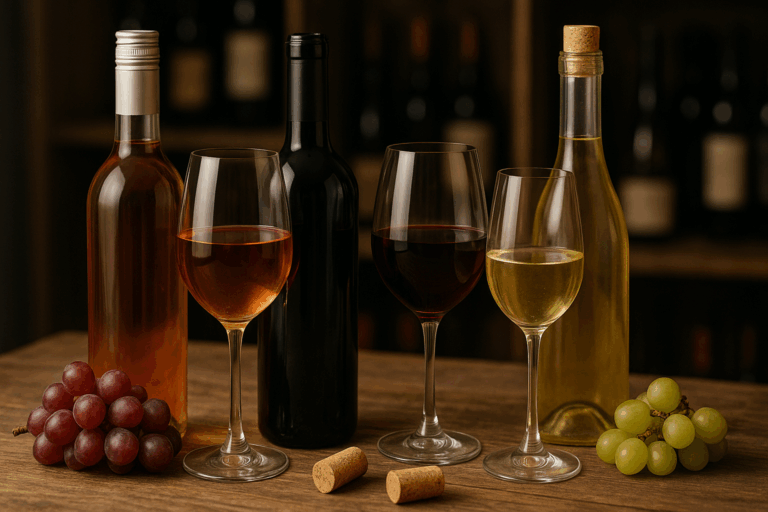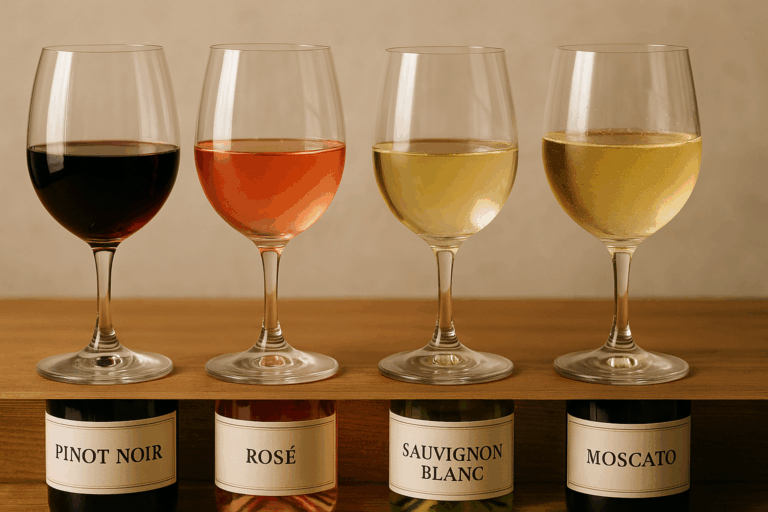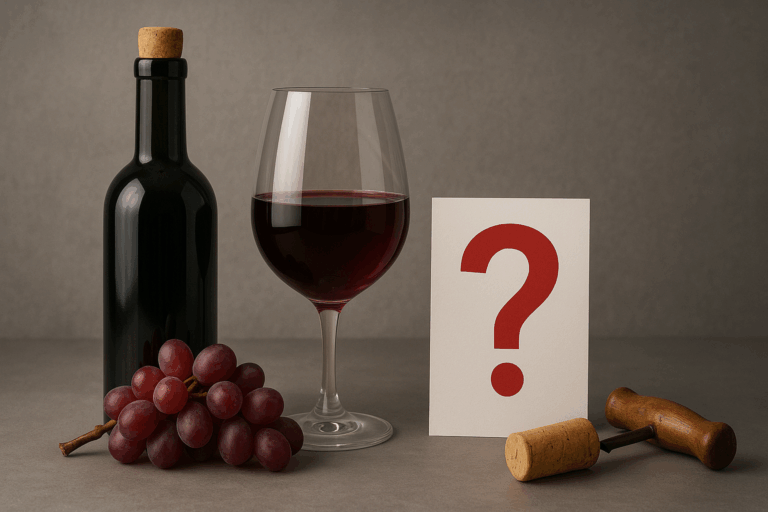The Right Wine Glass for the Right Wine: Does It Matter?
You’ve probably seen rows of different wine glasses in stores or at tastings some tall and narrow, others round and wide. But does the shape of the glass actually change how wine tastes? Or is it just about aesthetics?
In this guide, we’ll break down the purpose of different wine glass shapes, why they matter (especially for aroma and flavor), and which glasses are best for beginners.
Why Glass Shape Affects Taste
Wine isn’t just about flavor — it’s about aroma, temperature, and how it hits your palate. The shape of the glass influences:
- Aroma concentration: Narrow openings trap scents
- Surface area: Wide bowls let the wine “breathe”
- Flow: The shape controls where the wine lands on your tongue
That’s why certain wines benefit from specific glass shapes — to emphasize their best qualities.
Basic Wine Glass Anatomy
Before diving into types, here are the main parts of any wine glass:
- Bowl: The round part that holds the wine
- Rim: The top edge where your lips meet the glass
- Stem: The handle (prevents warming the wine with your hand)
- Base: The flat bottom that supports the glass
Stemless glasses are becoming more popular, but stemmed glasses still offer better temperature control and elegance.
The Main Types of Wine Glasses
1. Red Wine Glass
- Bigger bowl, sometimes wider opening
- Enhances oxygen exposure, softens tannins
- Focuses aromas in the upper bowl
Best for:
- Cabernet Sauvignon
- Merlot
- Syrah/Shiraz
Tip: Use larger glasses for bold reds and smaller ones for light reds like Pinot Noir.
2. White Wine Glass
- Smaller bowl, narrower rim
- Preserves delicate aromas and cooler temperature
- Focuses acidity and crispness
Best for:
- Sauvignon Blanc
- Chardonnay
- Riesling
Tip: Use tulip-shaped glasses for aromatic whites like Gewürztraminer.
3. Rosé Wine Glass
- Similar to white wine glasses
- Some feature slightly flared rims to enhance fruitiness
- Great for chilled wines
Best for:
- Provence-style Rosé
- Fruity or semi-sweet rosés
4. Sparkling Wine Glass (Flute)
- Tall and narrow
- Helps preserve bubbles
- Focuses aromas upwards
Best for:
- Champagne
- Prosecco
- Cava
Modern trend: Some sommeliers prefer tulip-shaped sparkling glasses for better aroma expression.
5. Dessert Wine Glass
- Small bowl, compact shape
- Controls high alcohol and sweetness
- Enhances concentration
Best for:
- Port
- Sauternes
- Ice Wine
Do You Really Need All These Glasses?
Not at all — especially as a beginner.
If you want a simple, all-purpose glass, go with a medium-sized tulip-shaped glass with a slightly tapered rim. This works well for both reds and whites and is a great place to start.
Tips for Choosing Glassware
- Crystal or Glass? Crystal is thinner and more elegant, but also more fragile and expensive. Glass is durable and great for everyday use.
- Hand-wash or dishwasher? Some wine glasses are dishwasher-safe, but hand-washing prolongs their life.
- Avoid colored or heavily etched glasses — they make it harder to see the wine’s true color and clarity.
What About Stemless Glasses?
They’re trendy, casual, and practical. But they:
- Warm wine faster (no stem)
- Smudge easily (you hold the bowl)
- Are fine for informal settings and picnics
Use stemless for convenience, but keep stemmed glasses for tasting.
Storage and Care Tips
- Store glasses upright, not upside down — rims are fragile.
- Rinse with hot water before first use to remove dust.
- Polish with a microfiber cloth to avoid streaks.
Final Thoughts: It’s About Enhancing Enjoyment
The right wine glass won’t magically turn a bad wine into a great one. But it can enhance your experience by helping aromas bloom, textures soften, and flavors shine.
As you explore more wines, consider experimenting with glass shapes — you might be surprised how much of a difference it makes.






